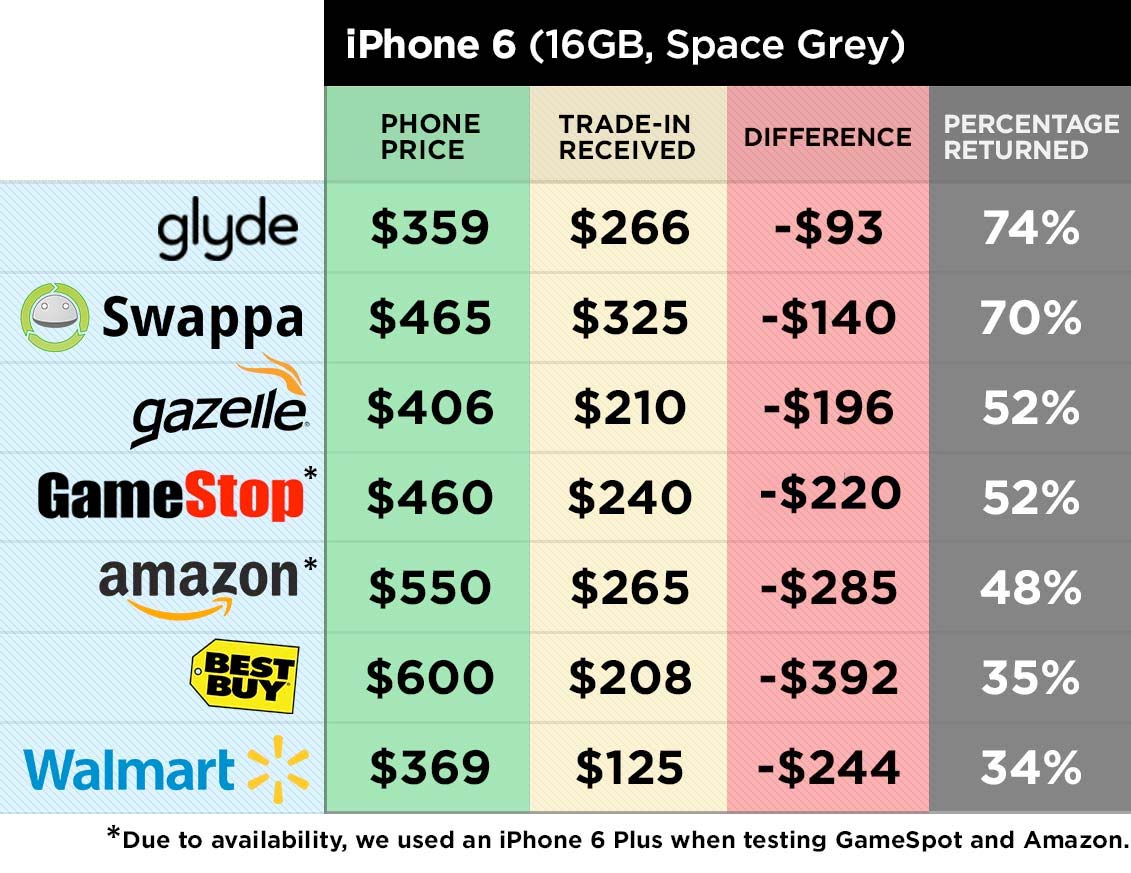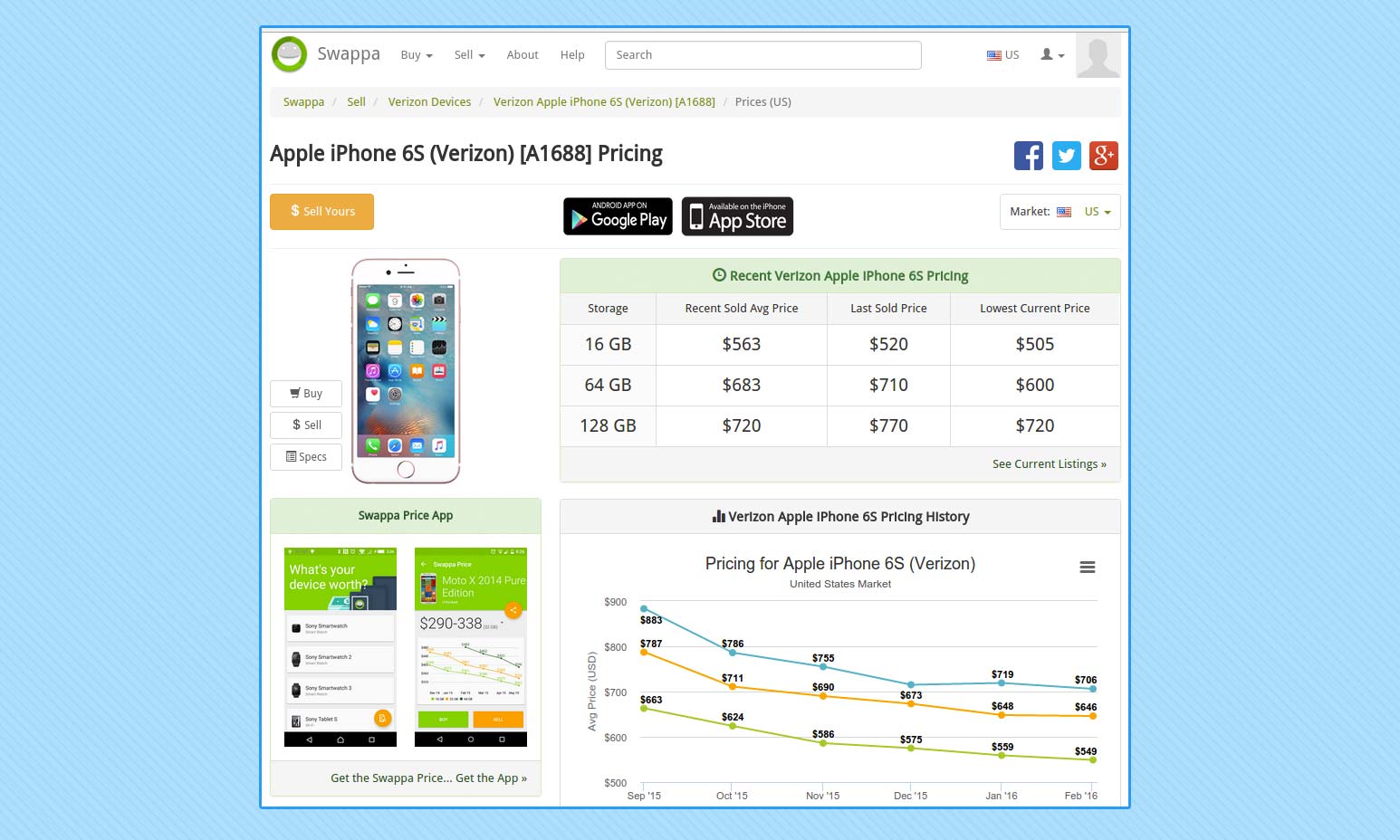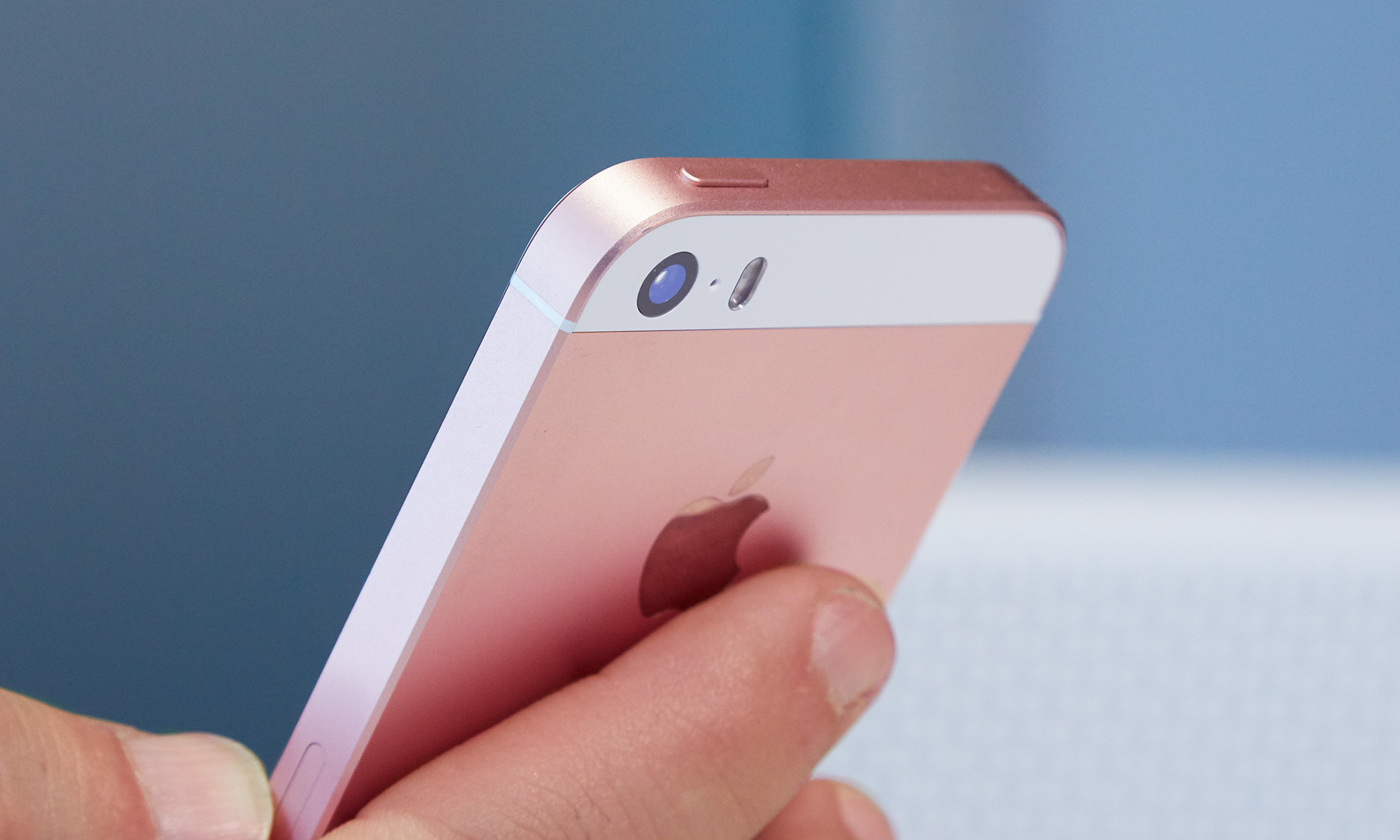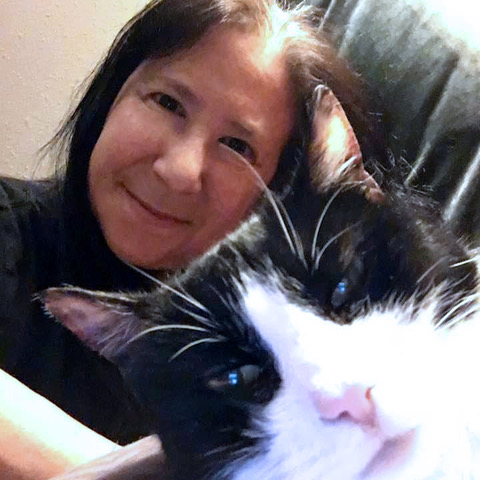Trading-In Your iPhone? Expect to Get Half of What It Sells For
The average trade-in value for an iPhone 6 is 52% of what you’d pay for the same phone, but you can get a much better deal with our guide.
When it’s time to sell off an old smartphone, only the most optimistic trader would expect to recoup about as much as they originally paid for their mobile device. But our testing found you’ll be lucky to get back half of the cost of your smartphone when you resell it — and in some cases you can expect even less.
To see just what kind of return you can expect when you try to resell your iPhone, we selected seven popular services for buying and selling used phones. We bought an iPhone from each one and then turned around and resold that same device to the very service we bought it from. On average, we got back a little more than half of what we paid for our iPhones — 52 percent.

Some services were more generous with their trade-in offers than others. Glyde had the highest rate of return, offering $265.60 for an iPhone 6 we had bought through the service a few weeks earlier for $359.50. That’s a 74 percent return. Swappa’s buyers also beat the average, offering us 70 percent of what we had paid for an iPhone 6 when we traded in the same phone. Neither Glyde or Swappa are really phone resellers; rather, they connect people looking to buy used phones with those hoping to sell them.
MORE: The Best and Worst iPhone Trade-In Deals
Other services take a bigger bite when you trade in your older phone. Walmart offered the worst return, giving us $125 back for a refurbished iPhone 6 that cost us $369 when we bought it from the retail giant. Best Buy was only marginally better, with a 35 percent return on what we had paid for an iPhone 6. Three other services — Gazelle, GameSpot and Amazon — were all around the 51 percent average in our testing.

“Each retailer or carrier will have its method of pricing used devices,” said Anthony Scarsella, IDC’s research manager of mobile phones. “Most have some algorithm or pricing tool in place that takes into consideration a variety of factors such as current market value, demand, and depreciation.”
According to Scarsella, supply and demand also play a significant role in the large spread of prices we saw. “For example, a big box retailer could have a big wholesale buyer lined up who exclusively wants Galaxy S6 models at that point of time. Galaxy S6 trade-in values go up to meet demand, and then back down when met,” he said. Thus, prices will vary depending on both consumer and wholesale clientele and the current market value of a device.
Get instant access to breaking news, the hottest reviews, great deals and helpful tips.
Shipping and logistics, inspection and handling, resale cost, marketing, current market value and profit margin all get baked into a pricing formula behind the scenes, Scarsella added.
You have other options when reselling your old device, including both carriers and the phone maker itself. To see how the rates we got from online resellers compared, we did a spot check on iPhone trade-ins with Apple, AT&T, Sprint, T-Mobile and Verizon.

While we used the iPhone 6 in our tests, we’d expect similar results from any smartphone brand of similar vintage. “At the end of the day, increased demand for high-end Apple and Samsung devices keep prices higher than all other devices on the market,” Scarsella said.
As disappointed as I was with the resale value of the iPhones we sold to some of those outlets, I came to understand how much better a deal we got with several of them than with the carriers. Apple offered a competitive, if fairly basic rate of return on trade-in. Its Renew program, run in conjunction with Brightstar, is a comprehensive outlet for trading old smartphones for Apple Store gift cards. Regardless of carrier or color, a 16GB iPhone 6 and 6 Plus generated a $225 or $250 Apple Store gift card across the board. This was on par with the high end of most of our vendors, though Swappa and Glyde offered slightly higher trade-ins for the iPhone 6.
Much like other sites, Sprint lets you tap in the model and capacity of your iPhone for sale and then gives you an estimate of what you might get back. In most cases, Sprint’s prices — at $159 for the iPhone 6 and and $168 for the Plus model — were lower than almost all of the reseller sites we tried.

With AT&T, you won’t get much of a return on your investment, either. My 16GB iPhone 6 yielded $200 while the Plus model would get up to $220, both lower trade-ins than most of the resellers we tried. You can also donate trade-in value to the Cell Phones for Soldiers program.
T-Mobile’s handy pop-up menu lets you search for just about any phone and service combination you want, but we found some variations depending on carrier. For example, an iPhone 6 on the AT&T network came in at $180 resale value, while the same model on Verizon could fetch $191.
The best carrier price we saw for a 16GB iPhone 6 was Verizon’s $265, which is not so shabby compared with the other carriers. You can get a gift card or donate to HopeLine for survivors of domestic violence.
The bottom line? If you’re looking to maximize the cash or credit you get back for your phone, an online reseller or reputable marketplace is a generally better choice than a carrier or phone maker — provided you pick a reseller or marketplace that offers an above average return.
Jackie is an obsessive, insomniac tech writer and editor in northern California. A wildlife advocate, cat fan, and photo app fanatic, her specialties include cross-platform hardware and software, art, design, photography, video, and a wide range of creative and productivity apps and systems. Formerly senior editor at Macworld and creativity editor at The Next Web, Jackie now writes for a variety of consumer tech publications.

